MARKETING
80+ Instagram Stats You Need to Know in 2023

It feels like Instagram, more than any other social media platform, is evolving at a dizzying pace. As it continues to roll out new features, updates, and algorithm changes, it can be hard to keep up.
That’s where the Instagram stats comes in. There’s a whole lot of research out there about Instagram — everything from the demographics of its users and its reach, to how negative space affects the performance of your posts (hint, hint: #68).
Read on to uncover more social media stats that’ll help you get ideas and improve your own Instagram posting strategy.
80+ Instagram Stats
Click on a category below to jump to the stats for that category:
- Instagram’s Growth
- Audience & Demographics
- Brand Adoption
- Instagram Post Content
- Instagram Posting Strategy
Instagram’s Growth & Usage
1. Instagram is expected to reach 1.44 billion users by 2025. (Source)
2. The Instagram app has over 78 million monthly active users. (Source)
3. 22% of marketers say Instagram has the most growth potential in 2023 than any other platform. (Source)
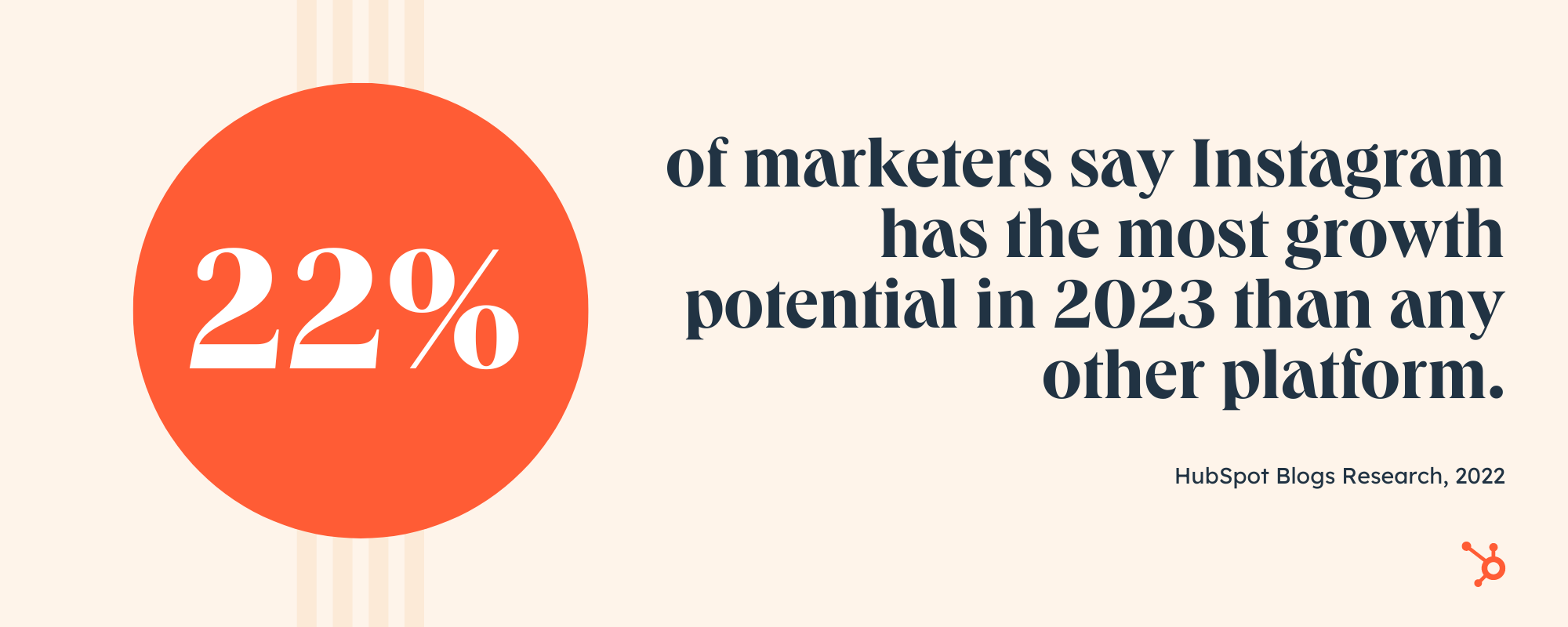
4. Instagram saw a 48% increase in ad reach from January 2020 to January 2022. (Source)
5. Almost a quarter of marketers (23%) predict that Instagram will offer brands the biggest potential to grow their audience in 2023. (Source)
6. Instagram is the most-used platform for influencer marketing in the U.S. (Source)
7. Marketers say Instagram is the social media platform they know how to use best. (Source)
8. There are an estimated 143 million Instagram users in the United States in 2023. (Source)
9. As of January 2023, India has a total of 229 million Instagram users, the largest Instagram audience in the world. (Source)
10. As of January 2022, Instagram was the fourth most popular social media platform in the world in terms of user numbers. YouTube and WhatsApp ranked in second and third place. (Source)
11. On average, U.S. adults spend 30.1 minutes a day on Instagram in 2022. (Source)
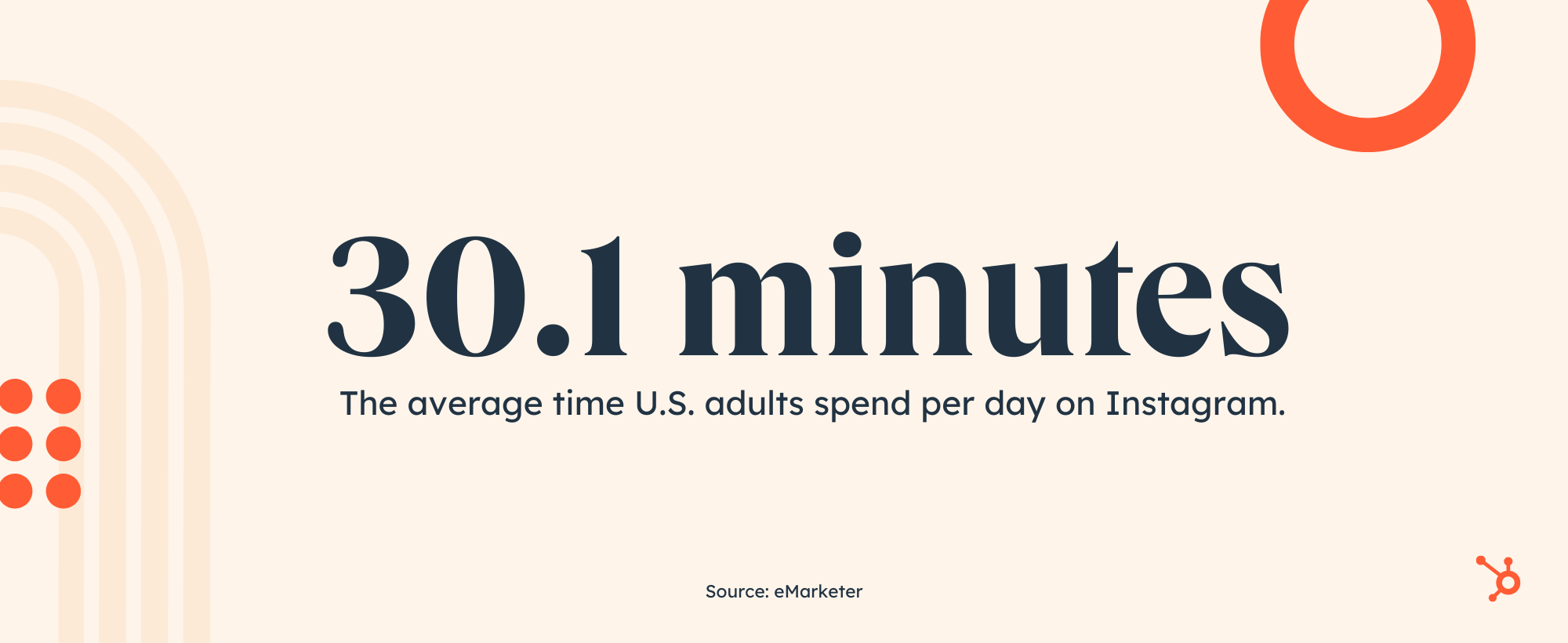
12. As of February 2023, the most-liked post on Instagram is a carousel of Argentine footballer Lionel Messi and his teammates celebrating the 2022 FIFA World Cup win. (Source)
13. Between January and June 2022, the fastest-growing content creator on Instagram was influencer Jorge Gomez, with 573% growth in six months. (Source)
14. Other than Instagram’s own account, the most-followed Instagram account as of January 2023 is professional soccer player Cristiano Ronaldo. (Source)
15. As of May 2022, Instagram’s own account has 504.37 million followers. (Source)
Audience & Demographics
16. More than half of the global Instagram population is 34 years of age or younger. (Source)
17. As of January 2023, almost 17% of global active Instagram users were men between the ages of 18 and 24 years. (Source)
18. Millennials ranked Instagram as their favorite social media app in 2022. (Source)
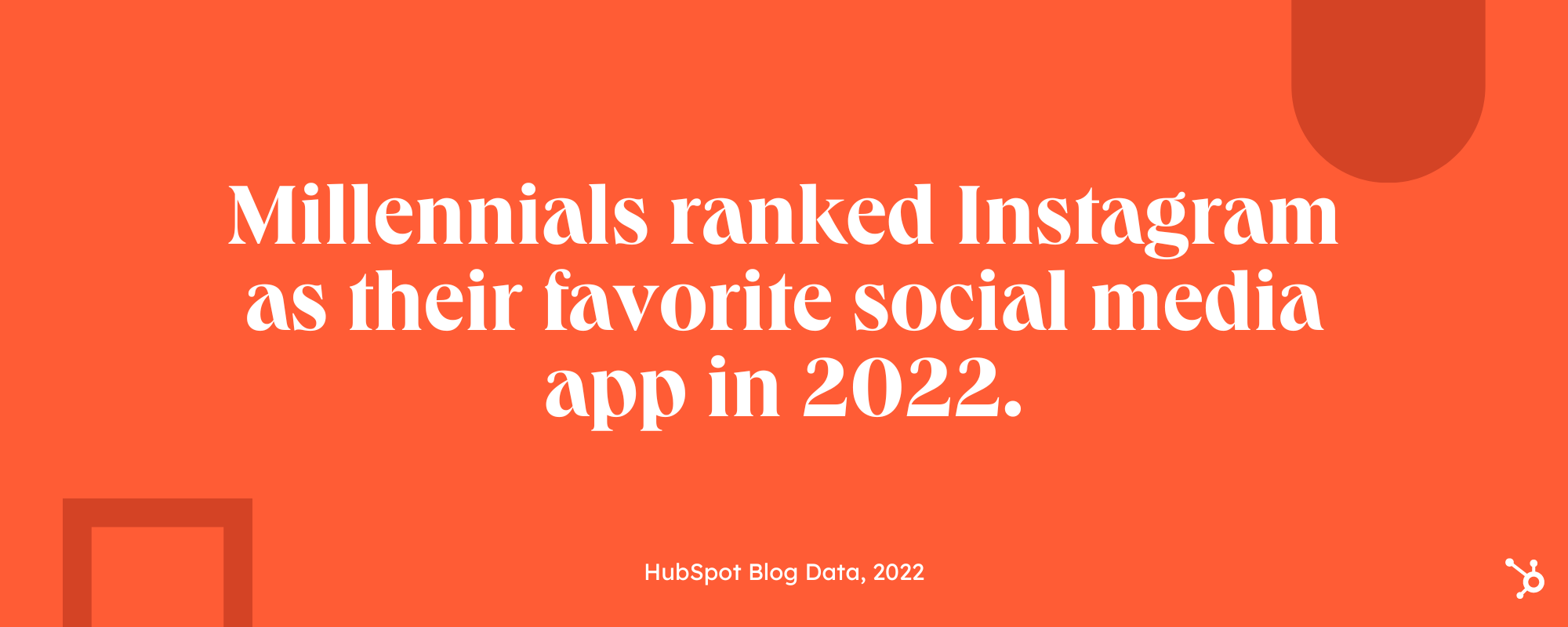
19. Gen Z-ers also ranked Instagram as their favorite social media app in 2022. (Source)
20. TikTok and Instagram are the most used social media apps among Gen Z women. (Source)
21. In December 2022, 55% of Instagram users in the United States were women and 44% percent were men. (Source)
22. Only 7% of Instagram users in the U.S. belong to the 13 to 17 year age group. (Source)
23. Only 4.7% of Instagram users in the U.S. are 65 plus. (Source)
24. As of 2022, 82% of Instagram users also use Facebook. (Source)
25. 47% of U.S. Instagram users make more than 75,000 per year. (Source)
26. Instagram users worldwide spend an average of 11 hours per month on the Instagram app on Android phones. This number drops to 7 hours for U.S. users. (Source)
27. 72% of teens use Instagram, and 57 million U.S. teenagers say Instagram is their preferred social media platform. (Source)
28. 500 million+ accounts use Instagram Stories every day. (Source)
29. 35% of music listeners in the U.S. who follow artists on Facebook and Instagram do so to connect with other fans or feel like part of a community. (Source)

30. The average Instagram user spends 30 minutes a day on the app. (Source)
31. 45% of Instagram users live in urban areas. (Source)
Brand Adoption
32. 72% of marketers work with influencers/creators on Instagram. (Source)
33. 29% of marketers plan to invest the most in Instagram out of any social media platform in 2023. (Source)
34. In terms of brand safety, 86% of marketers feel comfortable advertising on Instagram. (Source)
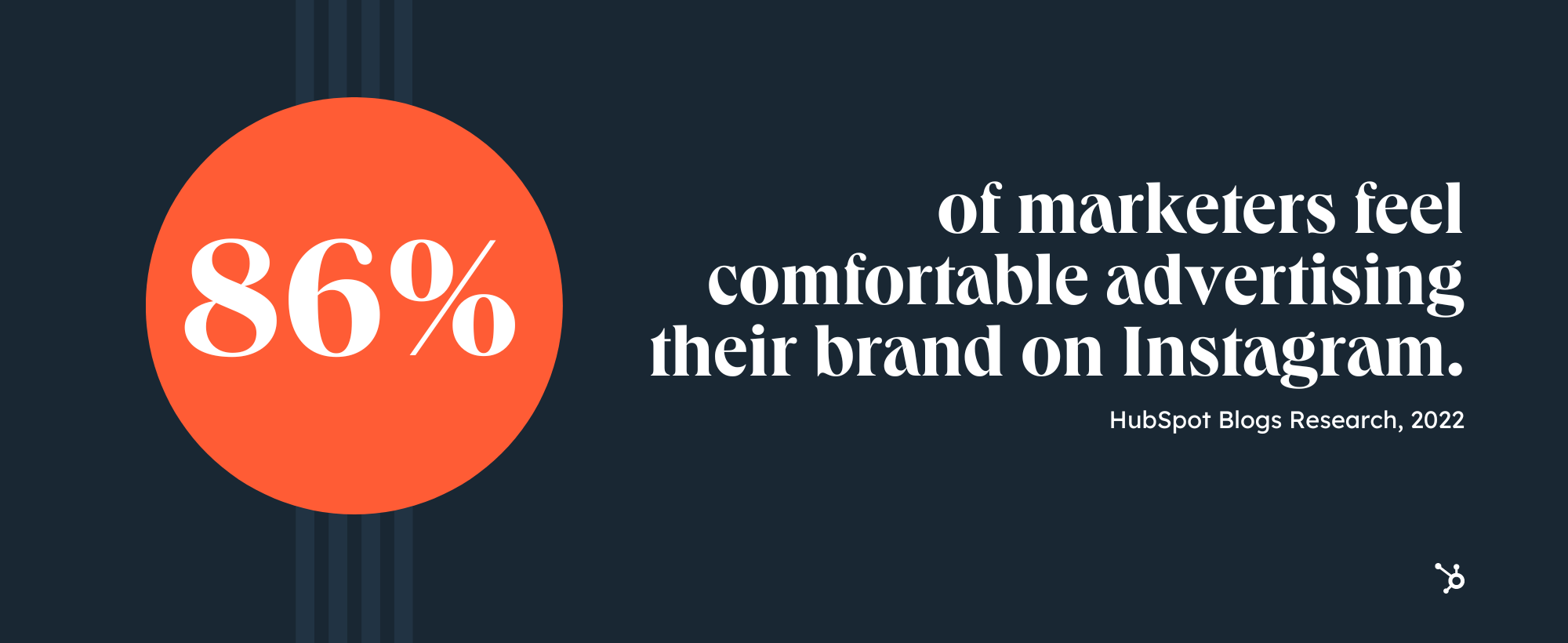
35. 53% of marketers say Instagram has high ROI. Only 7% of marketers say Instagram has low ROI. (Source)
36. 70% of shopping enthusiasts turn to Instagram for product discovery. (Source)
37. Marketers saw the highest engagement rates on Instagram out of any other platform in 2022. (Source)
38. 32% of marketers say Instagram is the easiest platform for working with influencers and creators. (Source)
39. 1 in 4 marketers say Instagram has resulted in the highest ROI out of any platform in 2022. (Source)
40. 27% of marketers plan to use Instagram the most for working creators and influencers in 2023. (Source)
41. More than half of marketers plan to increase their investment in Instagram in 2023. (Source)

42. In 2022, marketers saw the highest engagement rates on Instagram for user generated content. (Source)
43. Only 8% of marketers plan to decrease their investment in Instagram in 2023. (Source)
44. 36% of marketers plan to leverage Instagram for the first time in 2023. (Source)
45. 90% of people on Instagram follow at least one business. (Source)
46. 50% of Instagram users are more interested in a brand when they see ads for it on Instagram. (Source)
47. When it comes to posting organic content, 27% of marketers say Instagram offers the highest ROI for this type of content. (Source)
48. 1 in 4 marketers say Instagram provides the highest quality leads out of any social media platform. (Source)
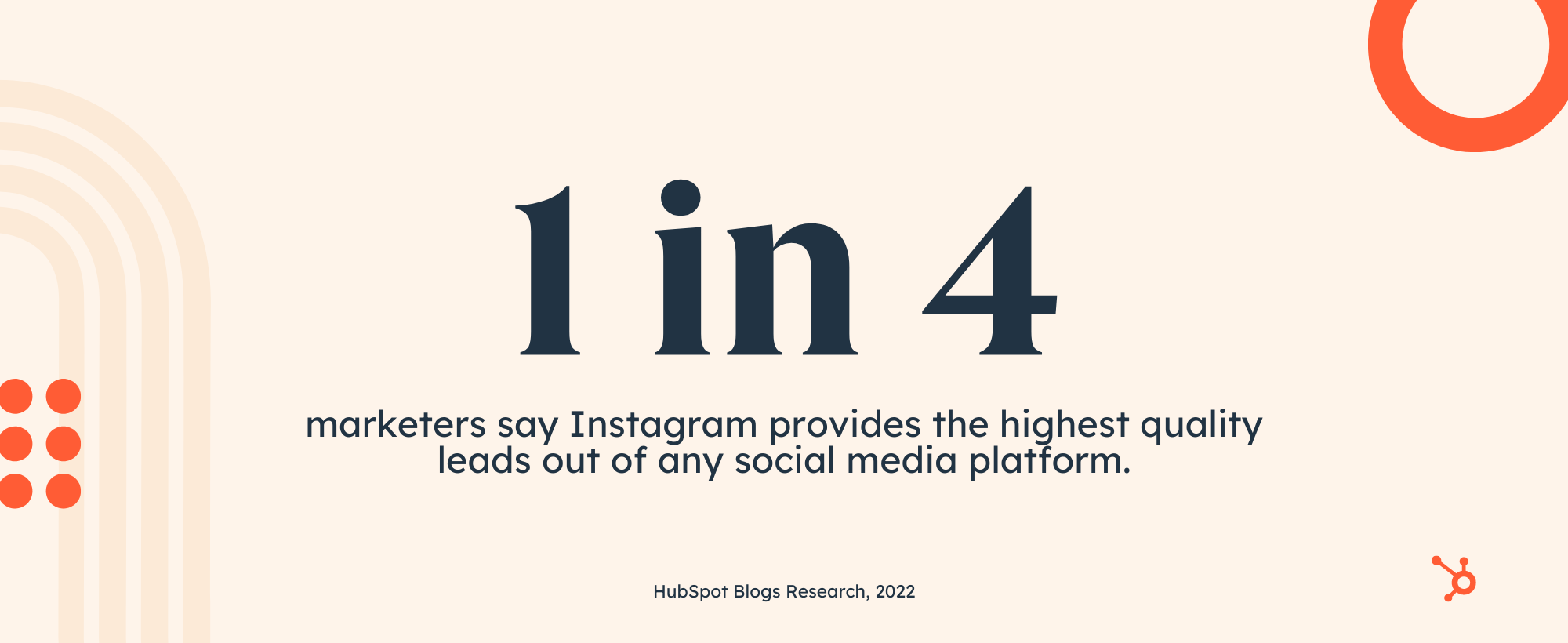
49. Nearly a quarter of marketers (23%) say Instagram is the most effective platform for brands looking to build a social media strategy for the first time in 2023. (Source)
50. 46% of marketers leverage Instagram Shops. Of the marketers who leverage Instagram Shops, 50% report high ROI. (Source)
51. 41% of marketers leverage Instagram Live Shopping. Of the marketers who leverage Instagram Live Shopping, 51% report high ROI. (Source)
52. In a 2021 report, the higher education industry currently has the highest engagement rate of any other industry per post on Instagram, at 3.19%. Second was sports teams at 1.79%, and third was influencers at 1.42%. (Source)
53. 67% of users surveyed have ‘swiped up’ on the links of branded Stories. (Source)
54. 130 million Instagram accounts tap on a shopping post to learn more about products every month. (Source)
Instagram Post Content
55. Engagement for static photos has decreased by 44% since 2019, around the time Reels made its debut. (Source)
56. The average engagement rate for photo posts is 1.18%. (Source)
57. The average engagement rate for carousel posts is 3.15% (Source)
58. As of January 2022, #love is the most popular hashtag on Instagram. Over two billion posts use this hashtag. (Source)
59. Marketers rank Instagram as the platform with the best in-app search capabilities. (Source)
60. The most popular Instagram Reel has 289+ million views. (Source)
61. Marketers rank Instagram as the platform with the most accurate algorithm, followed by Facebook. (Source)
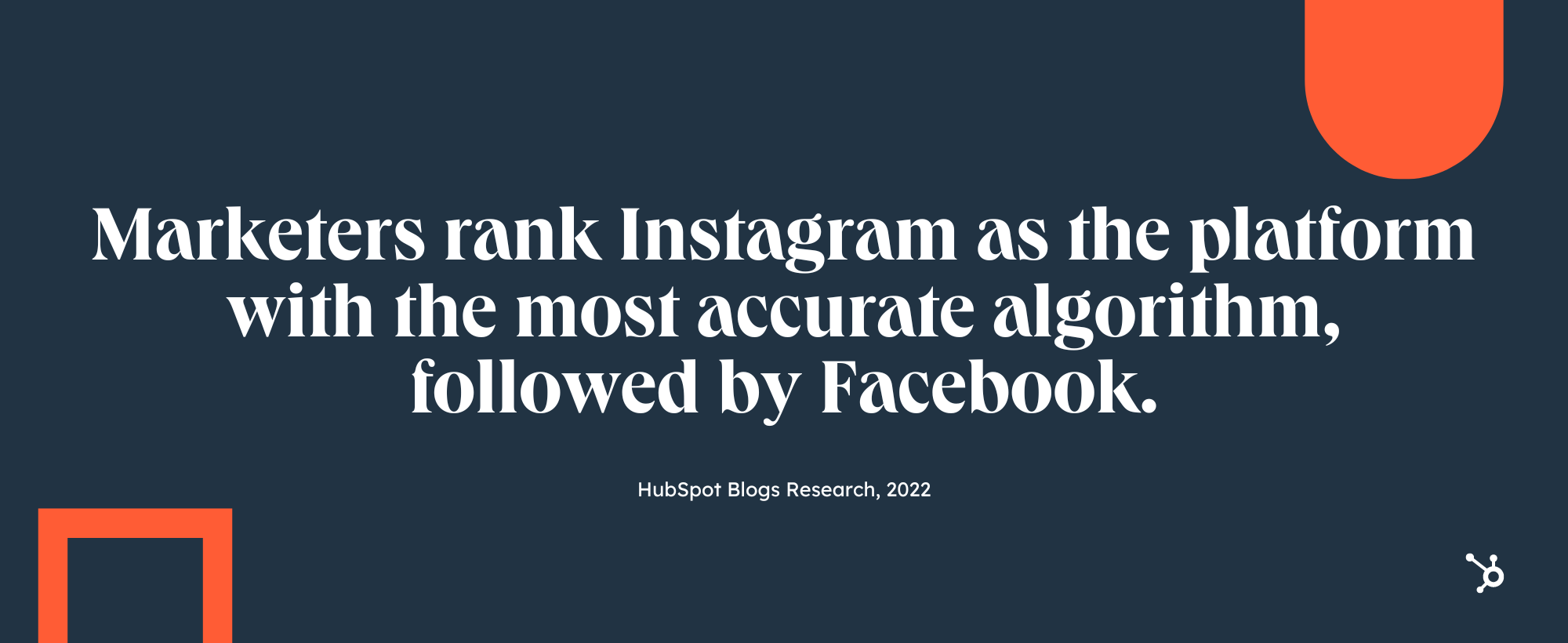
62. A third of marketers say Instagram offers the biggest ROI when selling products directly within the app. (Source)
63. As of 2021, 9 out of 10 users watch Instagram videos weekly. (Source)
64. A third of marketers say Instagram offers the best tools for selling products directly within the app. (Source)
65. 995 photos are uploaded on Instagram every second. (Source)
66. The median posting cadence across all industries is 4 posts per week. The median posting frequency declined by just 8% this year compared to last. (Source)
67. On Instagram, photos showing faces get 38% more Likes than photos not showing faces. (Source)
68. On Instagram, images with a high amount of negative space generate 29% more Likes than those with minimal negative space. (Source)
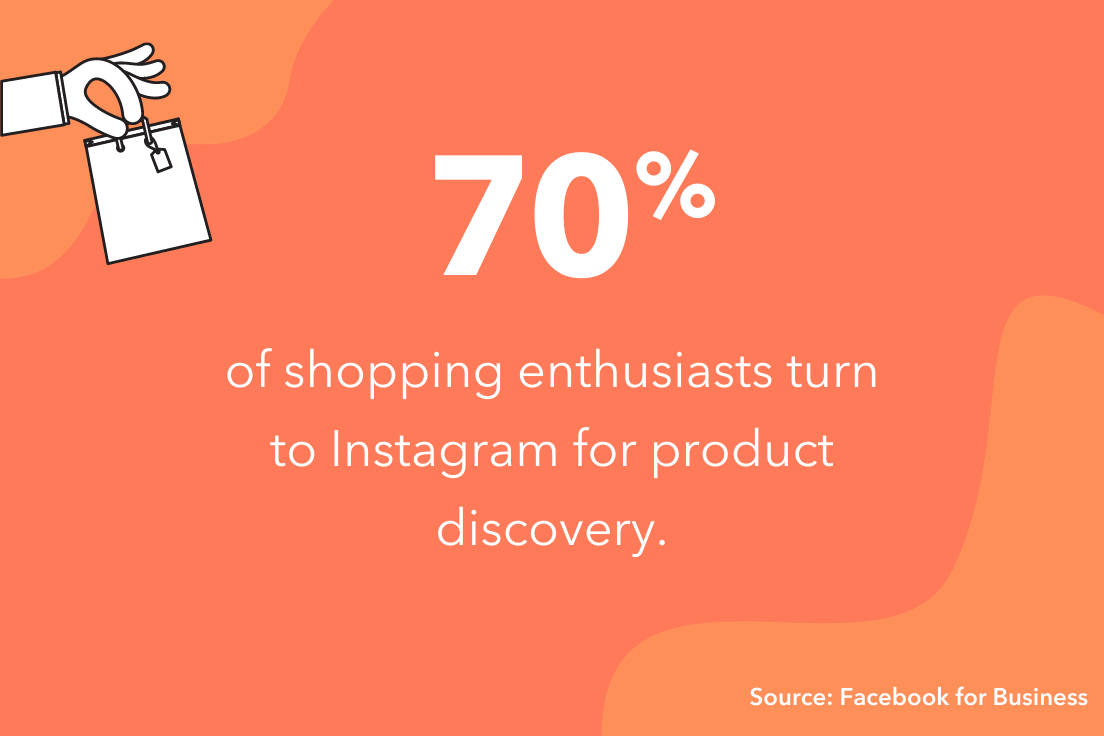
69. On Instagram, images featuring blue as the dominant color generate 24% more Likes than images that are predominantly red. (Source)
70. This is so much so that the latest Instagram statistics show that an average Instagram post contains as many as 10.7 hashtags. (Source)
71. Image posts received 27.55% more likes than permanent video posts. (Source)
72. An average image on Instagram gets 23% more engagement than one published on Facebook. (Source)
73. The most geo-tagged city in the world is Los Angeles, California and the tagged location with the highest engagement is Coachella, California. (Source)
Instagram Posting Strategy
74. The best time to post on Instagram is Friday between 6 p.m. and 9 p.m. in your respective time zone. (Source)
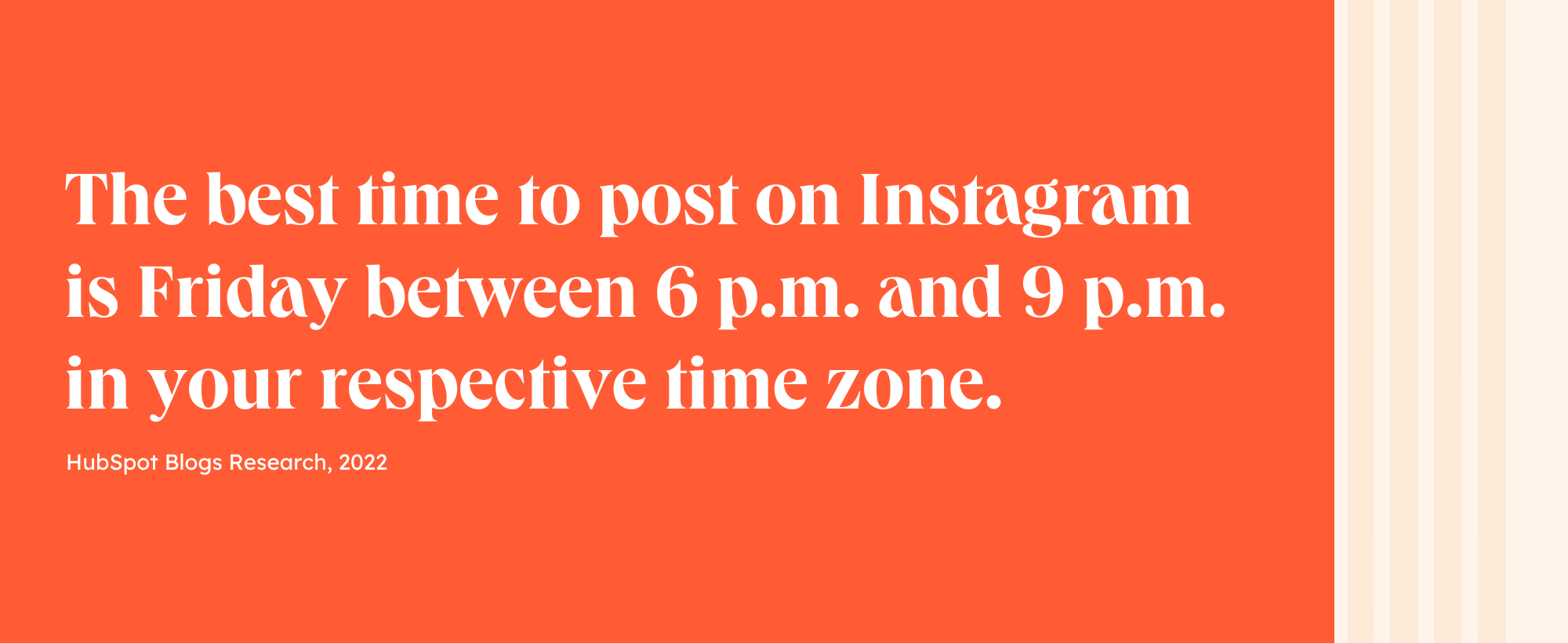
75. Posts with a tagged location result in 79% higher engagement than posts without a tagged location. (Source)
76. 20% of users surveyed post to Instagram Stories on their business account more than once a week. (Source)
77. 44% of users surveyed use Instagram Stories to promote products or services. (Source)
78. One-third of the most viewed Stories come from businesses. (Source)
79. More than 25 million businesses now use Instagram to reach and engage with audiences. (Source)
80. 69% of US marketers plan to spend most of their influencer budget on Instagram. (Source)
81. The industry that had the highest cooperation efficiency with Instagram influencers was Health Care, where influencer posts were 4.2x more efficient than brand posts. (Source)
82. Instagram is now the most popular social platform for following brands. (Source)
MARKETING
18 Events and Conferences for Black Entrepreneurs in 2024

Welcome to Breaking the Blueprint — a blog series that dives into the unique business challenges and opportunities of underrepresented business owners and entrepreneurs. Learn how they’ve grown or scaled their businesses, explored entrepreneurial ventures within their companies, or created side hustles, and how their stories can inspire and inform your own success.
It can feel isolating if you’re the only one in the room who looks like you.
MARKETING
IAB Podcast Upfront highlights rebounding audiences and increased innovation


Podcasts are bouncing back from last year’s slowdown with digital audio publishers, tech partners and brands innovating to build deep relationships with listeners.
At the IAB Podcast Upfront in New York this week, hit shows and successful brand placements were lauded. In addition to the excitement generated by stars like Jon Stewart and Charlamagne tha God, the numbers gauging the industry also showed promise.
U.S. podcast revenue is expected to grow 12% to reach $2 billion — up from 5% growth last year — according to a new IAB/PwC study. Podcasts are projected to reach $2.6 billion by 2026.
The growth is fueled by engaging content and the ability to measure its impact. Adtech is stepping in to measure, prove return on spend and manage brand safety in gripping, sometimes contentious, environments.
“As audio continues to evolve and gain traction, you can expect to hear new innovations around data, measurement, attribution and, crucially, about the ability to assess podcasting’s contribution to KPIs in comparison to other channels in the media mix,” said IAB CEO David Cohen, in his opening remarks.
Comedy and sports leading the way
Podcasting’s slowed growth in 2023 was indicative of lower ad budgets overall as advertisers braced for economic headwinds, according to Matt Shapo, director, Media Center for IAB, in his keynote. The drought is largely over. Data from media analytics firm Guideline found podcast gross media spend up 21.7% in Q1 2024 over Q1 2023. Monthly U.S. podcast listeners now number 135 million, averaging 8.3 podcast episodes per week, according to Edison Research.
Comedy overtook sports and news to become the top podcast category, according to the new IAB report, “U.S. Podcast Advertising Revenue Study: 2023 Revenue & 2024-2026 Growth Projects.” Comedy podcasts gained nearly 300 new advertisers in Q4 2023.
Sports defended second place among popular genres in the report. Announcements from the stage largely followed these preferences.
Jon Stewart, who recently returned to “The Daily Show” to host Mondays, announced a new podcast, “The Weekly Show with Jon Stewart,” via video message at the Upfront. The podcast will start next month and is part of Paramount Audio’s roster, which has a strong sports lineup thanks to its association with CBS Sports.
Reaching underserved groups and tastes
IHeartMedia toasted its partnership with radio and TV host Charlamagne tha God. Charlamagne’s The Black Effect is the largest podcast network in the U.S. for and by black creators. Comedian Jess Hilarious spoke about becoming the newest co-host of the long-running “The Breakfast Club” earlier this year, and doing it while pregnant.
The company also announced a new partnership with Hello Sunshine, a media company founded by Oscar-winner Reese Witherspoon. One resulting podcast, “The Bright Side,” is hosted by journalists Danielle Robay and Simone Boyce. The inspiration for the show was to tell positive stories as a counterweight to negativity in the culture.
With such a large population listening to podcasts, advertisers can now benefit from reaching specific groups catered to by fine-tuned creators and topics. As the top U.S. audio network, iHeartMedia touted its reach of 276 million broadcast listeners.
Connecting advertisers with the right audience
Through its acquisition of technology, including audio adtech company Triton Digital in 2021, as well as data partnerships, iHeartMedia claims a targetable audience of 34 million podcast listeners through its podcast network, and a broader audio audience of 226 million for advertisers, using first- and third-party data.
“A more diverse audience is tuning in, creating more opportunities for more genres to reach consumers — from true crime to business to history to science and culture, there is content for everyone,” Cohen said.
The IAB study found that the top individual advertiser categories in 2023 were Arts, Entertainment and Media (14%), Financial Services (13%), CPG (12%) and Retail (11%). The largest segment of advertisers was Other (27%), which means many podcast advertisers have distinct products and services and are looking to connect with similarly personalized content.
Acast, the top global podcast network, founded in Stockholm a decade ago, boasts 125,000 shows and 400 million monthly listeners. The company acquired podcast database Podchaser in 2022 to gain insights on 4.5 million podcasts (at the time) with over 1.7 billion data points.
Measurement and brand safety
Technology is catching up to the sheer volume of content in the digital audio space. Measurement company Adelaide developed its standard unit of attention, the AU, to predict how effective ad placements will be in an “apples to apples” way across channels. This method is used by The Coca-Cola Company, NBA and AB InBev, among other big advertisers.
In a study with National Public Media, which includes NPR radio and popular podcasts like the “Tiny Desk” concert series, Adelaide found that NPR, on average, scored 10% higher than Adelaide’s Podcast AU Benchmarks, correlating to full-funnel outcomes. NPR listeners weren’t just clicking through to advertisers’ sites, they were considering making a purchase.
Advertisers can also get deep insights on ad effectiveness through Wondery’s premium podcasts — the company was acquired by Amazon in 2020. Ads on its podcasts can now be managed through the Amazon DSP, and measurement of purchases resulting from ads will soon be available.
The podcast landscape is growing rapidly, and advertisers are understandably concerned about involving their brands with potentially controversial content. AI company Seekr develops large language models (LLMs) to analyze online content, including the context around what’s being said on a podcast. It offers a civility rating that determines if a podcast mentioning “shootings,” for instance, is speaking responsibly and civilly about the topic. In doing so, Seekr adds a layer of confidence for advertisers who would otherwise pass over an opportunity to reach an engaged audience on a topic that means a lot to them. Seekr recently partnered with ad agency Oxford Road to bring more confidence to clients.
“When we move beyond the top 100 podcasts, it becomes infinitely more challenging for these long tails of podcasts to be discovered and monetized,” said Pat LaCroix, EVP, strategic partnerships at Seekr. “Media has a trust problem. We’re living in a time of content fragmentation, political polarization and misinformation. This is all leading to a complex and challenging environment for brands to navigate, especially in a channel where brand safety tools have been in the infancy stage.”
Dig deeper: 10 top marketing podcasts for 2024
MARKETING
Foundations of Agency Success: Simplifying Operations for Growth


Why do we read books like Traction, Scaling Up, and the E-Myth and still struggle with implementing systems, defining processes, and training people in our agency?
Those are incredibly comprehensive methodologies. And yet digital agencies still suffer from feast or famine months, inconsistent results and timelines on projects, quality control, revisions, and much more. It’s not because they aren’t excellent at what they do. I
t’s not because there isn’t value in their service. It’s often because they haven’t defined the three most important elements of delivery: the how, the when, and the why.
Complicating our operations early on can lead to a ton of failure in implementing them. Business owners overcomplicate their own processes, hesitate to write things down, and then there’s a ton of operational drag in the company.
Couple that with split attention and paper-thin resources and you have yourself an agency that spends most of its time putting out fires, reacting to problems with clients, and generally building a culture of “the Founder/Creative Director/Leader will fix it” mentality.
Before we chat through how truly simple this can all be, let’s first go back to the beginning.
When we start our companies, we’re told to hustle. And hustle hard. We’re coached that it takes a ton of effort to create momentum, close deals, hire people, and manage projects. And that is all true. There is a ton of work that goes into getting a business up and running.


The challenge is that we all adopt this habit of burning the candle at both ends and the middle all for the sake of growing the business. And we bring that habit into the next stage of growth when our business needs… you guessed it… exactly the opposite.
In Mike Michalowitz’s book, Profit First he opens by insisting the reader understand and accept a fundamental truth: our business is a cash-eating monster. The truth is, our business is also a time-eating monster. And it’s only when we realize that as long as we keep feeding it our time and our resources, it’ll gobble everything up leaving you with nothing in your pocket and a ton of confusion around why you can’t grow.
Truth is, financial problems are easy compared to operational problems. Money is everywhere. You can go get a loan or go create more revenue by providing value easily. What’s harder is taking that money and creating systems that produce profitably. Next level is taking that money, creating profit and time freedom.
In my bestselling book, The Sabbatical Method, I teach owners how to fundamentally peel back the time they spend in their company, doing everything, and how it can save owners a lot of money, time, and headaches by professionalizing their operations.
The tough part about being a digital agency owner is that you likely started your business because you were great at something. Building websites, creating Search Engine Optimization strategies, or running paid media campaigns. And then you ended up running a company. Those are two very different things.


How to Get Out of Your Own Way and Create Some Simple Structure for Your Agency…
- Start Working Less
I know this sounds really brash and counterintuitive, but I’ve seen it work wonders for clients and colleagues alike. I often say you can’t see the label from inside the bottle and I’ve found no truer statement when it comes to things like planning, vision, direction, and operations creation.
Owners who stay in the weeds of their business while trying to build the structure are like hunters in the jungle hacking through the brush with a machete, getting nowhere with really sore arms. Instead, define your work day, create those boundaries of involvement, stop working weekends, nights and jumping over people’s heads to solve problems.
It’ll help you get another vantage point on your company and your team can build some autonomy in the meantime.
- Master the Art of Knowledge Transfer
There are two ways to impart knowledge on others: apprenticeship and writing something down. Apprenticeship began as a lifelong relationship and often knowledge was only retained by ONE person who would carry on your method.
Writing things down used to be limited (before the printing press) to whoever held the pages.
We’re fortunate that today, we have many ways of imparting knowledge to our team. And creating this habit early on can save a business from being dependent on any one person who has a bunch of “how” and “when” up in their noggin.
While you’re taking some time to get out of the day-to-day, start writing things down and recording your screen (use a tool like loom.com) while you’re answering questions.


Deposit those teachings into a company knowledge base, a central location for company resources. Some of the most scaleable and sellable companies I’ve ever worked with had this habit down pat.
- Define Your Processes
Lean in. No fancy tool or software is going to save your company. Every team I’ve ever worked with who came to me with a half-built project management tool suffered immensely from not first defining their process. This isn’t easy to do, but it can be simple.
The thing that hangs up most teams to dry is simply making decisions. If you can decide how you do something, when you do it and why it’s happening that way, you’ve already won. I know exactly what you’re thinking: our process changes all the time, per client, per engagement, etc. That’s fine.
Small businesses should be finding better, more efficient ways to do things all the time. Developing your processes and creating a maintenance effort to keep them accurate and updated is going to be a liferaft in choppy seas. You’ll be able to cling to it when the agency gets busy.
“I’m so busy, how can I possibly work less and make time for this?”


You can’t afford not to do this work. Burning the candle at both ends and the middle will catch up eventually and in some form or another. Whether it’s burnout, clients churning out of the company, a team member leaving, some huge, unexpected tax bill.
I’ve heard all the stories and they all suck. It’s easier than ever to start a business and it’s harder than ever to keep one. This work might not be sexy, but it gives us the freedom we craved when we began our companies.
Start small and simple and watch your company become more predictable and your team more efficient.
-

 PPC6 days ago
PPC6 days agoHow the TikTok Algorithm Works in 2024 (+9 Ways to Go Viral)
-

 SEO7 days ago
SEO7 days agoBlog Post Checklist: Check All Prior to Hitting “Publish”
-

 SEO5 days ago
SEO5 days agoHow to Use Keywords for SEO: The Complete Beginner’s Guide
-

 MARKETING6 days ago
MARKETING6 days agoHow To Protect Your People and Brand
-

 SEARCHENGINES7 days ago
SEARCHENGINES7 days agoGoogle Started Enforcing The Site Reputation Abuse Policy
-

 PPC7 days ago
PPC7 days agoHow to Craft Compelling Google Ads for eCommerce
-

 MARKETING6 days ago
MARKETING6 days agoElevating Women in SEO for a More Inclusive Industry
-

 PPC6 days ago
PPC6 days agoHow to Brainstorm Business Ideas: 9 Fool-Proof Approaches


![80+ Instagram Stats You Need to Know in 2023 Download Now: The State of Social Media Trends [Free Report]](https://articles.entireweb.com/wp-content/uploads/2023/02/Which-Social-Media-Channels-See-the-Most-ROI-New-Data.png)
















You must be logged in to post a comment Login